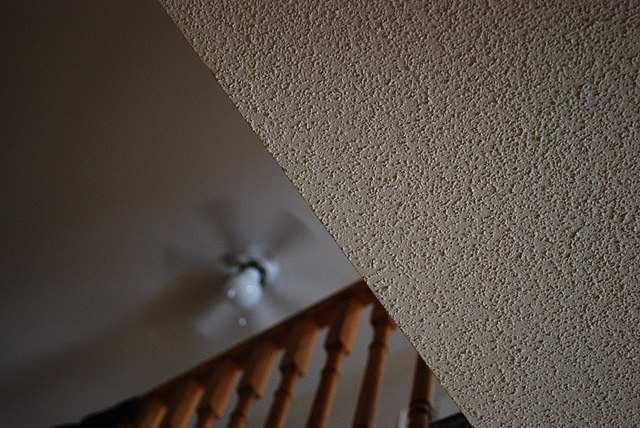Exploring the Pros and Cons of Ceiling Texture In Kelowna, Vernon, and West Kelowna
Ceiling texture is still a drywall treatment that generates a lot of questions for us from the general public. I thought to take a few minutes here to address some of the common pros and cons related to ceiling texture vs. smooth ceiling finishes. THAT Drywall Guy hopes you find this information helpful.
Ceiling Texture, also known as popcorn or stipple texture, is a popular decorative choice for many homeowners. It adds a unique visual appeal and can help mask imperfections on the ceiling surface. However, like any design element, there are both pros and cons to consider before deciding to texture your ceiling. In this article, we will explore the advantages and disadvantages of ceiling texture, helping you make an informed decision for your home.
Exploring the Pros and Cons of Ceiling Texture
Pros of Ceiling Texture:
- Concealing Imperfections: One of the primary benefits of ceiling texture is its ability to hide imperfections. Uneven surfaces, cracks, and minor damage can be easily hidden with a textured ceiling. This makes it an attractive option for older homes with outdated or damaged ceilings, as it eliminates the need for costly repairs or complete ceiling replacement.
- Acoustic Properties (Sound Proofing): Ceiling texture can also enhance the acoustic properties of a room. The texture helps to diffuse sound waves, reducing echo and improving the overall sound quality. This makes it a popular choice for media rooms, home theatres, and recording studios.
- Visual Interest: Texture adds visual interest and depth to an otherwise boring ceiling. It can complement various interior design styles, from traditional to contemporary, and can be customized to create unique patterns or designs. With a wide range of texture options available, you can choose a style that matches your personal taste and enhances the overall aesthetics of the room.
- Low Maintenance: Textured ceilings are generally low maintenance. Once applied, they require minimal upkeep compared to smooth ceilings. The texture helps to hide dust, cobwebs, and other surface debris, reducing the frequency of cleaning. Additionally, any minor damage that may occur over time, such as small cracks, is less noticeable on a textured surface.
Cons of Ceiling Texture:
- Difficult to Repair: While ceiling texture can hide imperfections, it can make repairs more challenging. If a section of the ceiling gets damaged or needs to be repaired, blending the texture seamlessly can be a daunting task. It may require the entire ceiling to be re-textured to maintain a consistent look, which can be time-consuming and costly.
- Cleaning Challenges: While textured ceilings may require less frequent cleaning due to their ability to hide dust, cleaning them can be more challenging. The rough surface of the texture tends to accumulate dirt and grime over time, making it harder to clean thoroughly. Care must be taken not to damage the texture while cleaning, especially if using abrasive cleaning methods.
- Outdated Aesthetic: Ceiling texture gained popularity in the mid-20th century but has since become less trendy. Many homeowners today prefer smooth and sleek ceiling surfaces, which give a more modern and clean look to the room. If you are considering selling your home in the future, a textured ceiling may be viewed as outdated by potential buyers and could impact its market appeal.
- Reduced Light Reflection: Textured ceilings tend to reflect light differently compared to smooth surfaces. The uneven surface can cause light to scatter and create shadows, which may reduce the overall brightness of a room. This can be particularly noticeable if the room has limited natural light or if you rely on artificial lighting for brightness.
Conclusion: Ceiling texture offers several advantages, including its ability to conceal imperfections, enhance acoustics, and add visual interest to a room. It is a low-maintenance option that can transform the look of a ceiling without the need for extensive repairs. However, it is important to consider the drawbacks, such as the difficulty of repairs, cleaning challenges, the potential outdated aesthetic, and reduced light reflection. Ultimately, the decision to texture your ceiling should be based on your personal preferences, the style of your home, and the overall ambience you want to create in the space.
If you have other questions related to textured ceiling applications, then feel free to email us. If you live in the Kelowna, Vernon, Lake Country, or West Kelowna areas of BC, then feel free to text us at 778-215-4337.




0